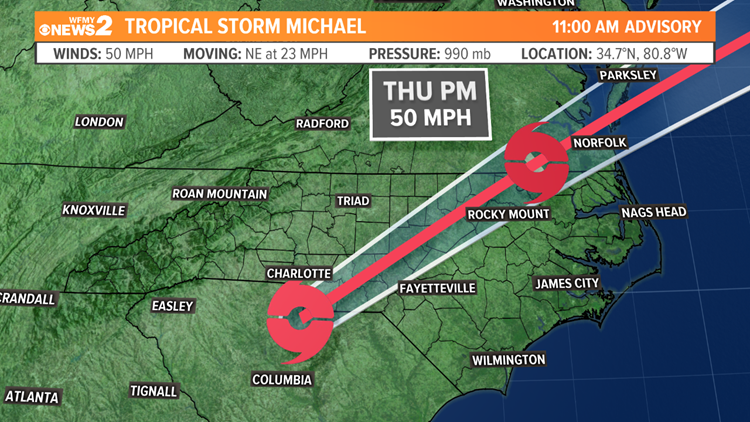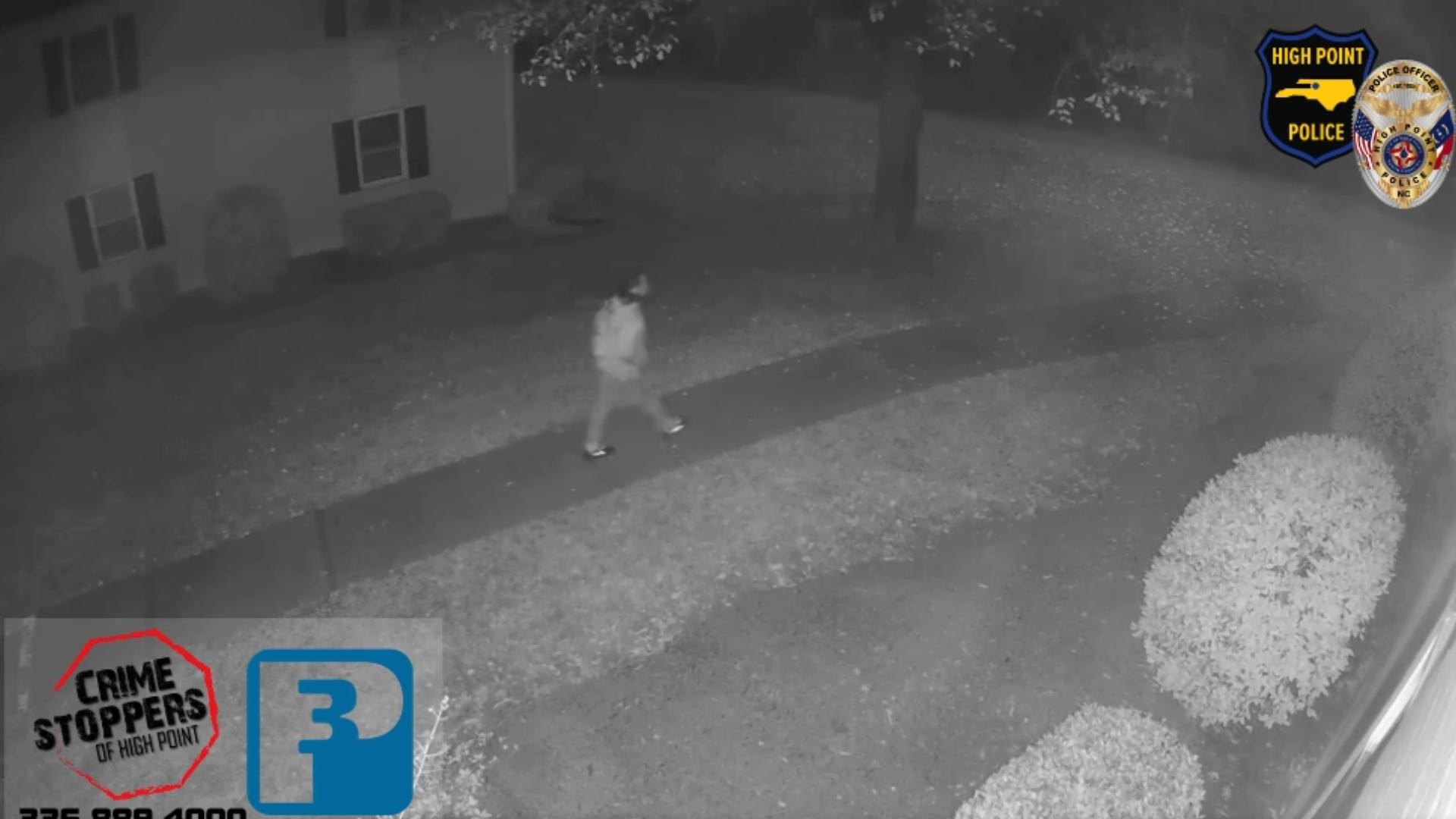GREENSBORO, NC -- Tropical Storm Michael is hitting the Triad right now with rain and wind. Plan on heavy rain and high winds at times to continue through early evening that will create some power outages and flash flooding. Everything will die down by late evening, with sunshine for Friday.
The WFMY News 2 Weather Team is tracking the storm.
MICHAEL STRENGTH & LOCATION NOW:
Michael is now a tropical storm. It is packing winds of about 50 mph, and the center is located east of Charlotte early Thursday afternoon. It continues to move northeast quickly at about 23 mph.
Earlier Wednesday, Michael made landfall near Mexico Beach, during the afternoon according to the National Hurricane Center. The pressure of 919 mb was the third lowest on record for a tropical system in the mainland United States.

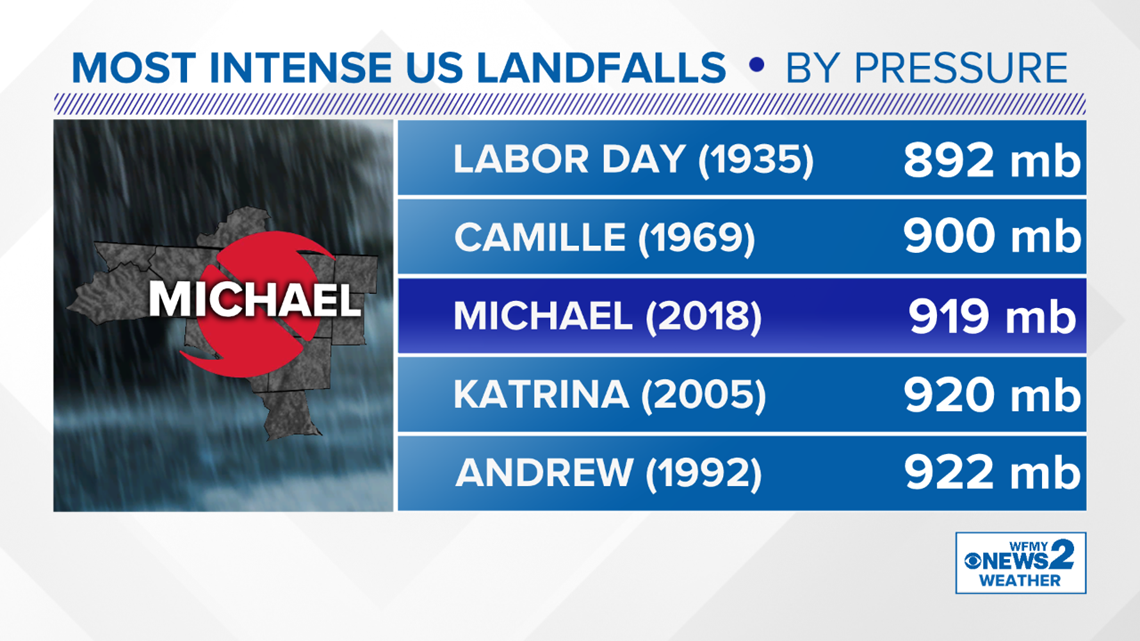
LATEST PROJECTED TRACK:

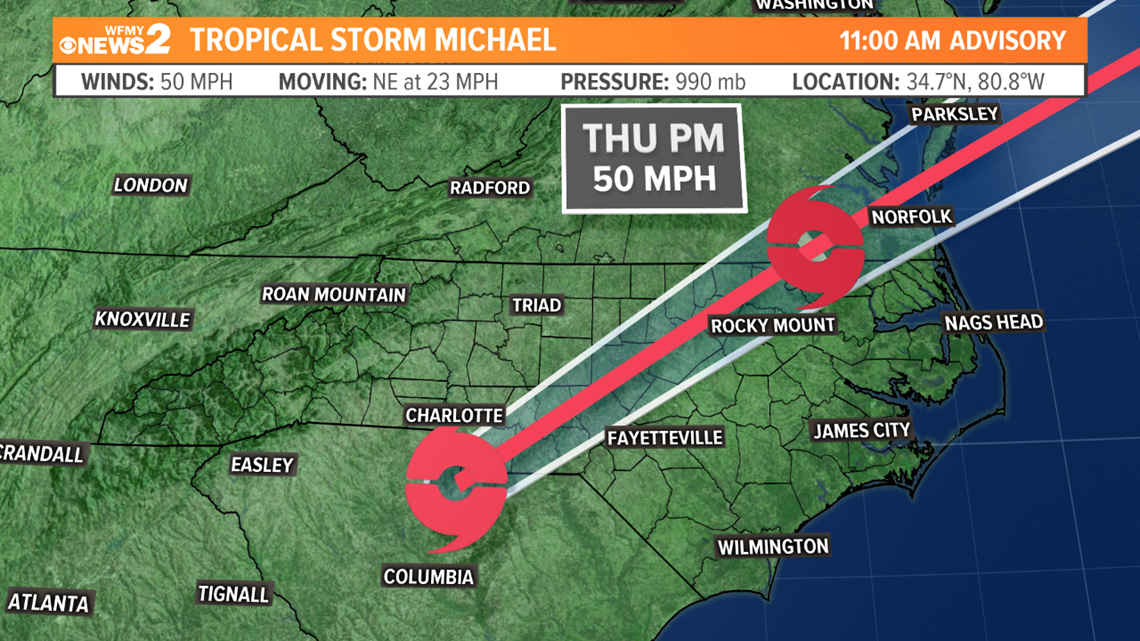
Michael will continue quickly move through the Carolinas through Thursday afternoon, and start to exit quickly on Thursday evening. Heavy rain and high winds will pick up by the lunchtime hour, and stick around through the afternoon. By evening, the heavy rain and high winds will slowly start to subside a bit.
WHAT TO EXPECT HERE:
Plan on this. Widespread totals of 2" to 4" of rain are likely across the Piedmont, with higher amounts of 4 to 6" possible in some ares. This is enough to cause some flash flooding problems on Thursday. Rivers could rise above flood stage on Friday.
As far as wind goes, we can plan on 15-30 mph sustained winds, with gusts of 30-50 mph at times. This would be enough to cause some scattered power outages and possibly a few downed trees Thursday. Duke Energy estimates between 300,000 and 500,000 customers in North & South Carolina could lose power during the storm.
Timeline:

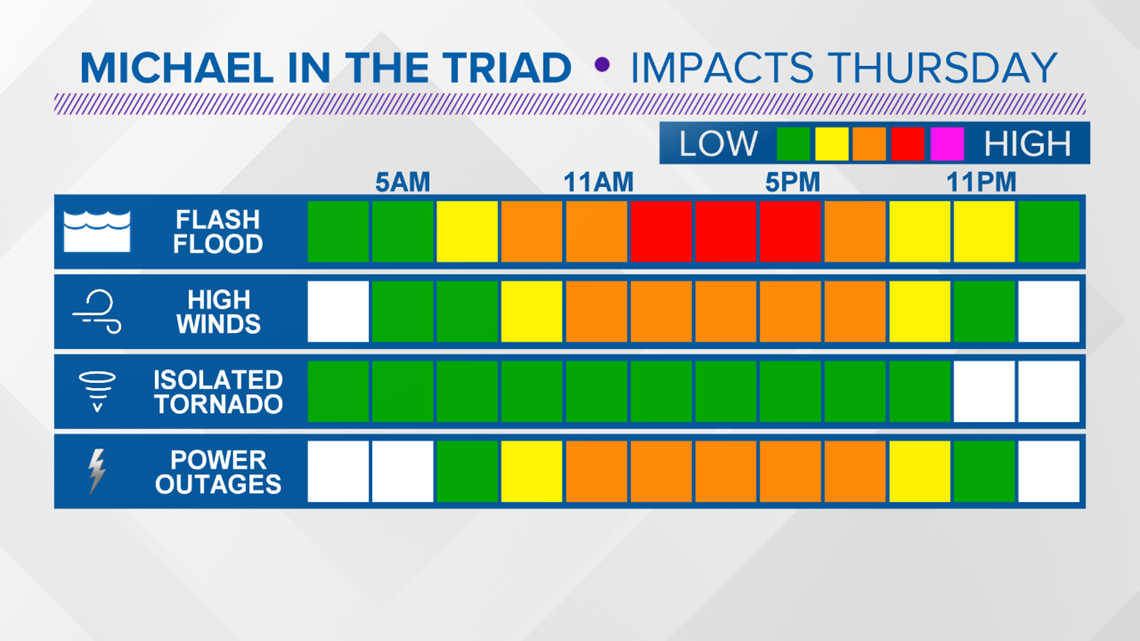
Rain Forecast:

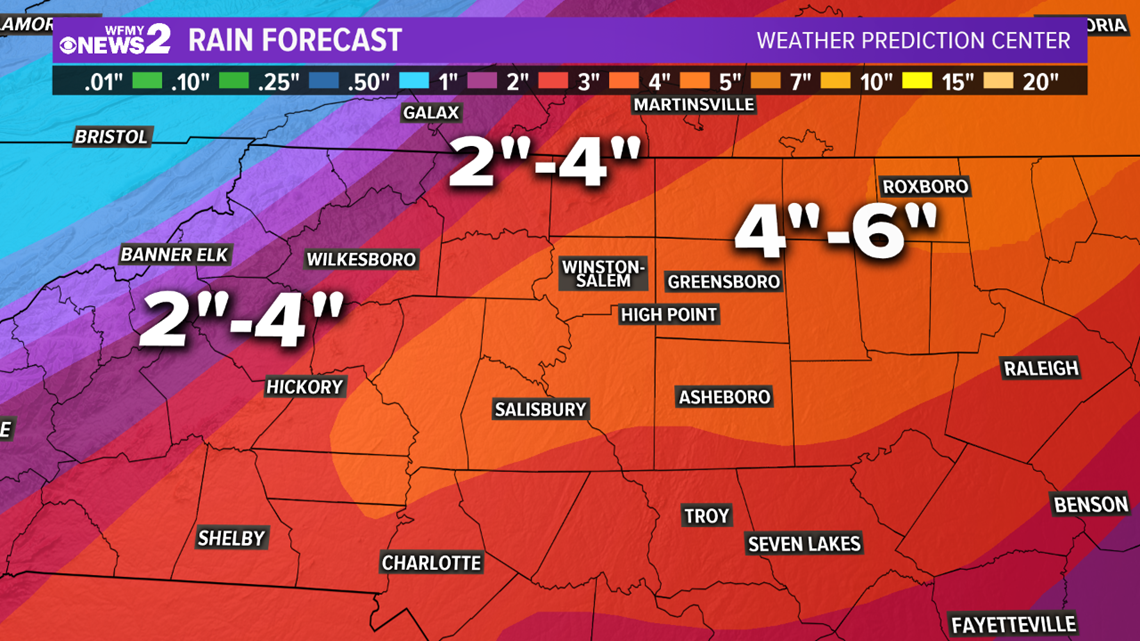
Rain totals will generally be 4 to 6 inches in the Triad. That's plenty enough to cause some flash flooding throughout the day, especially in areas that are prone to flooding.
Tornado Threat:

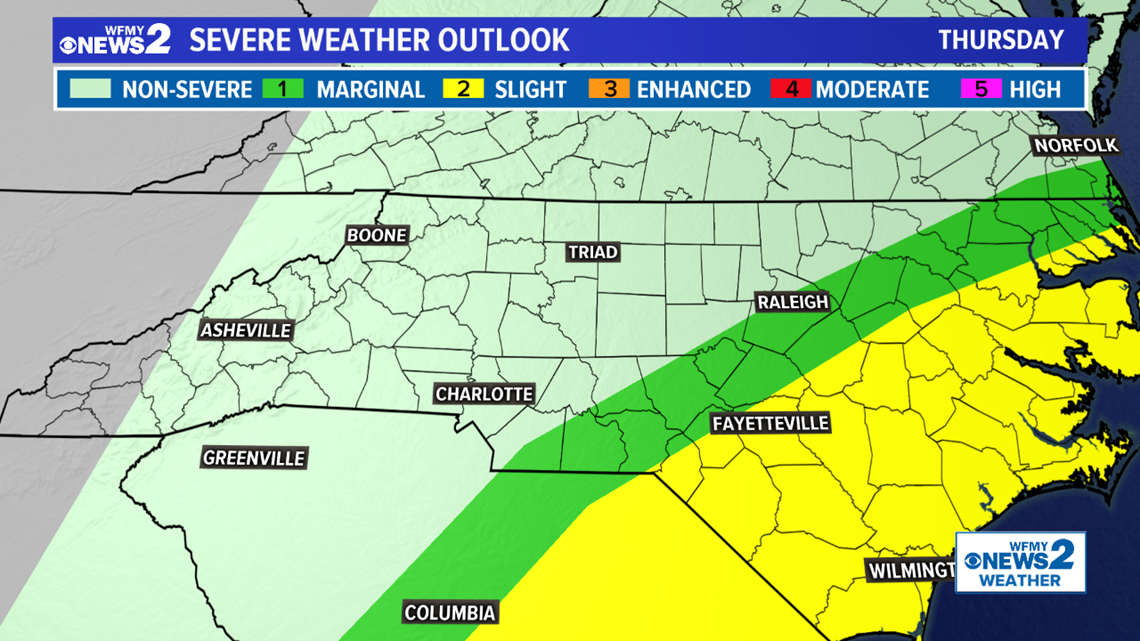
The concern for tornadoes is greater south and east of the Triad, but we'll have to keep our eyes peeled. Areas along the Coastal Plain and the Sandhills will have a better chance to see a tornado or two on Thursday.
TORNADO SAFETY TIPS
From the National Weather Service
- The safest place to be is an underground shelter, basement, or safe room.
- If no underground shelter or safe room is available, a small, windowless interior room or hallway on the lowest level of a sturdy building is the safest alternative.
- Mobile homes are not safe during tornadoes. Abandon mobile homes and go to the nearest sturdy building or shelter immediately.
- If you are caught outdoors, seek shelter in a basement, shelter or sturdy building. If you cannot quickly walk to a shelter: Immediately get into a vehicle, buckle your seat belt and try to drive to the closest sturdy shelter.
- If flying debris occurs while you are driving, pull over and park. Now you have the following options as a last resort: Stay in your vehicle with the seat belt on. Put your head down below the windows, covering with your hands and a blanket if possible.
- If you can safely get noticeably lower than the level of the roadway, exit your car, and lie in that area, covering your head with your hands.
- Your choice should be driven by your specific circumstances
House/Stand-alone building:
- Get to the lowest level possible
- Go to an area with as many walls between you as possible
- Get in a bathtub or interior closet
Mobile Home:
- Get out of the mobile home and get in a sturdy building if possible
- Get out of the mobile home and hunker in a ditch
- If no ditch or building is nearby, plan ahead and get to a sturdy building ahead of time
Apartment:
- Get to the lowest level (go to a neighbor's apartment on the first floor)
- Regardless of what floor you're on, get in a bathtub or interior closet
- If you are on a higher level and can't get to a lower apartment, hunker down in the breezeway of the apartment building
Car:
- If possible, pull over, park, get inside a building and out of the storm
- If you have to stay in your car, try to find a ditch to park in and use your emergency break
- DO NOT park under a bridge or overpass
Miscellaneous Tips for Keeping Safe in a Tornado:
- Cover yourself with a mattress, sleeping bags, or pillows
- Wear a helmet to protect your head
- Hunker down as much as possible
FLOOD SAFETY
With a hurricane or tropical storm, there’s always a potential for flooding. Here’s what you should know about flood safety.
- Know types of flood risk in your area. Visit FEMA’s Flood Map Service Center for information.
- Check out: NC Flood Maps
- If flash flooding is a risk in your location, then monitor potential signs, such as heavy rain.
- Remember to TURN AROUND, DON’T DROWN!
- If told to evacuate, do so immediately. Never drive around barricades. Local responders use them to safely direct traffic out of flooded areas.
- If your vehicle is trapped in rapidly moving water, then stay inside. If water is rising inside the vehicle, then seek refuge on the roof.
- If trapped in a building, then go to its highest level. Do not climb into a closed attic. You may become trapped by rising floodwater. Go on the roof only if necessary. Once there, signal for help.
- Stay away from high water, storm drains, ditches, ravines, or culverts
- 12 inches of water can carry away a small car
- More than half of ALL flood-related drownings occur when a vehicle is driven into flood waters
- Many flash flood deaths occur at night
- 6 inches of fast moving water can knock you off your feet
- It takes only 2 feet of water to float away most vehicles
- Never walk through flood waters
- If you’re trapped by moving water move to the highest point and call 911
- If line markings on the road are not visible, DO NOT drive through the water
- Avoid driving through pools of standing water.
- Purchase or renew a flood insurance policy. It typically takes up to 30 days for a policy to go into effect and can protect the life you've built. Homeowner’s policies do not cover flooding. Get flood coverage under the National Flood Insurance Program (NFIP)
► Stay on top of weather by downloading the WFMY News 2 App: Apple Users, Android Users
We'll keep you updated on this system.

